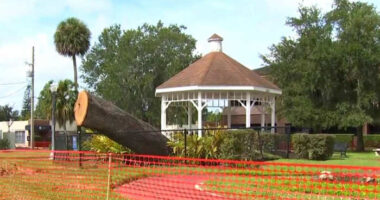Share this @internewscast.com

SAVANNAH, Ga. () — Staying cool might be easy if you work in a climate-controlled office or from home, but for others, the threat of heat stroke is a constant concern throughout the day.
Picture this: It’s a bright, sunny day, and after hours of walking, fatigue sets in. Sweat trickles down your brow, and a headache emerges. Your last meal was over four hours ago, and you’ve yet to drink any water. Your skin is clammy, and your limbs feel weak. You’re contemplating eating something, but suddenly nausea hits, making you feel like you might vomit.
Are those symptoms of heat stroke or heat exhaustion?
When temperatures rise, your body works to cool itself down. Heat exhaustion, though less dangerous than heat stroke, can escalate if not addressed, leading to potentially serious and even permanent health issues.
Heat exhaustion symptoms include dizziness, headaches, heavy sweating, extreme thirst, weakness and nausea. This occurs when your body loses excessive water and salt.
The best way to treat this is by moving to a cooler environment, change to looser clothing, apply a cool wet cloth or cold compress. If you can, sit in a cool bath and drink sips of water slowly.
Where you apply a cold compress also matters:
Pulse points are areas in your body where your blood vessels are closer to your skin, making them more effective placements when cooling off with a cold compress. These areas include your inner thighs, the inside of your elbows and knees, the top of your feet, your temple and the front of your ear.
The National Weather Service (NWS) recommends seeking immediate medical attention if the person vomits, their symptoms worsen or last longer than an hour.
Heat strokes occur when your body cannot cool itself enough through sweat. Symptoms include throbbing headaches, confusion, slurred speech, body temperature above 103 degrees, strong pulse, fainting or loss of consciousness.
In this scenario, NWS recommends calling 911 immediately as heat strokes are severe medical emergencies and awaiting treatment can be deadly. Do not provide liquids to someone suffering from a heat stroke.














